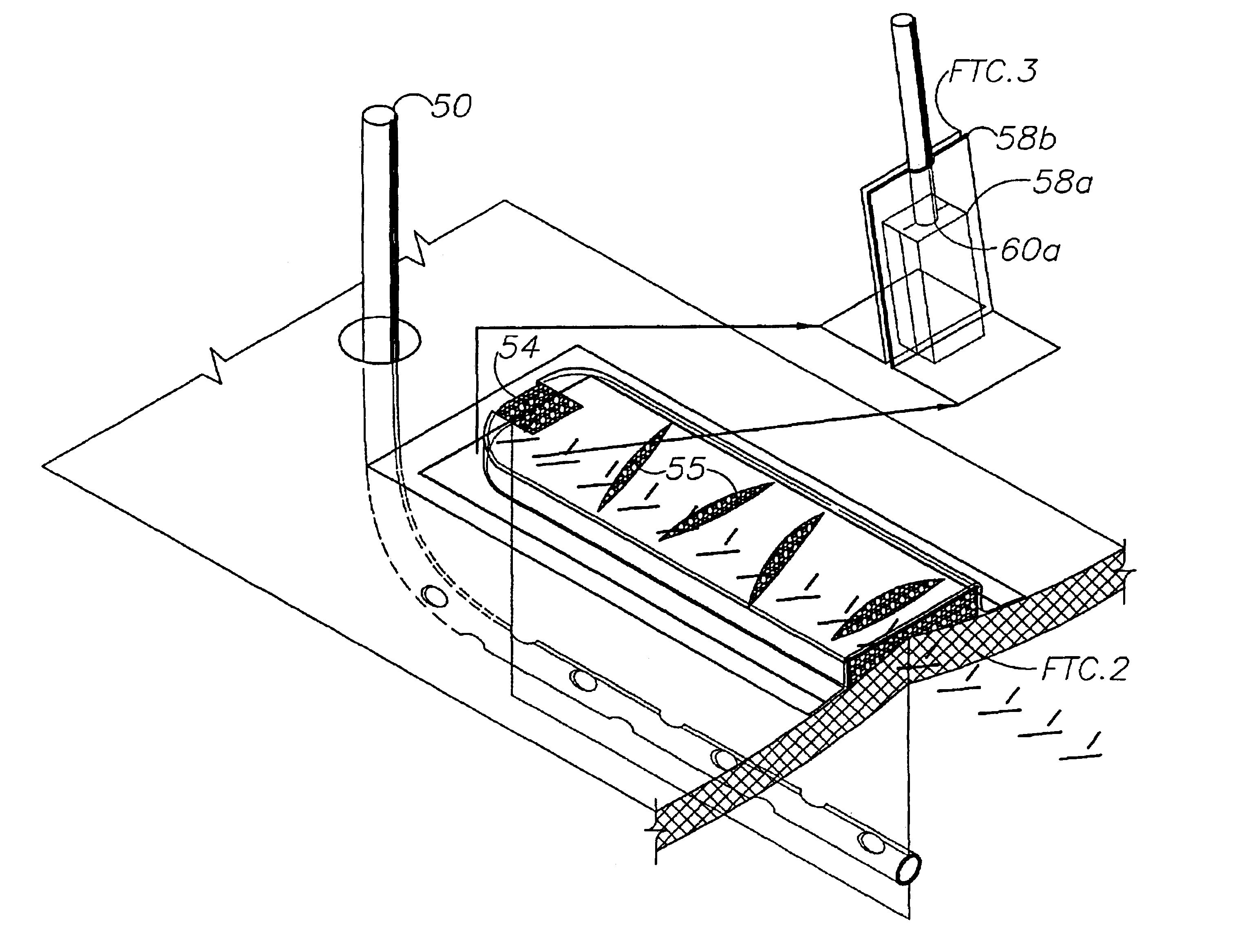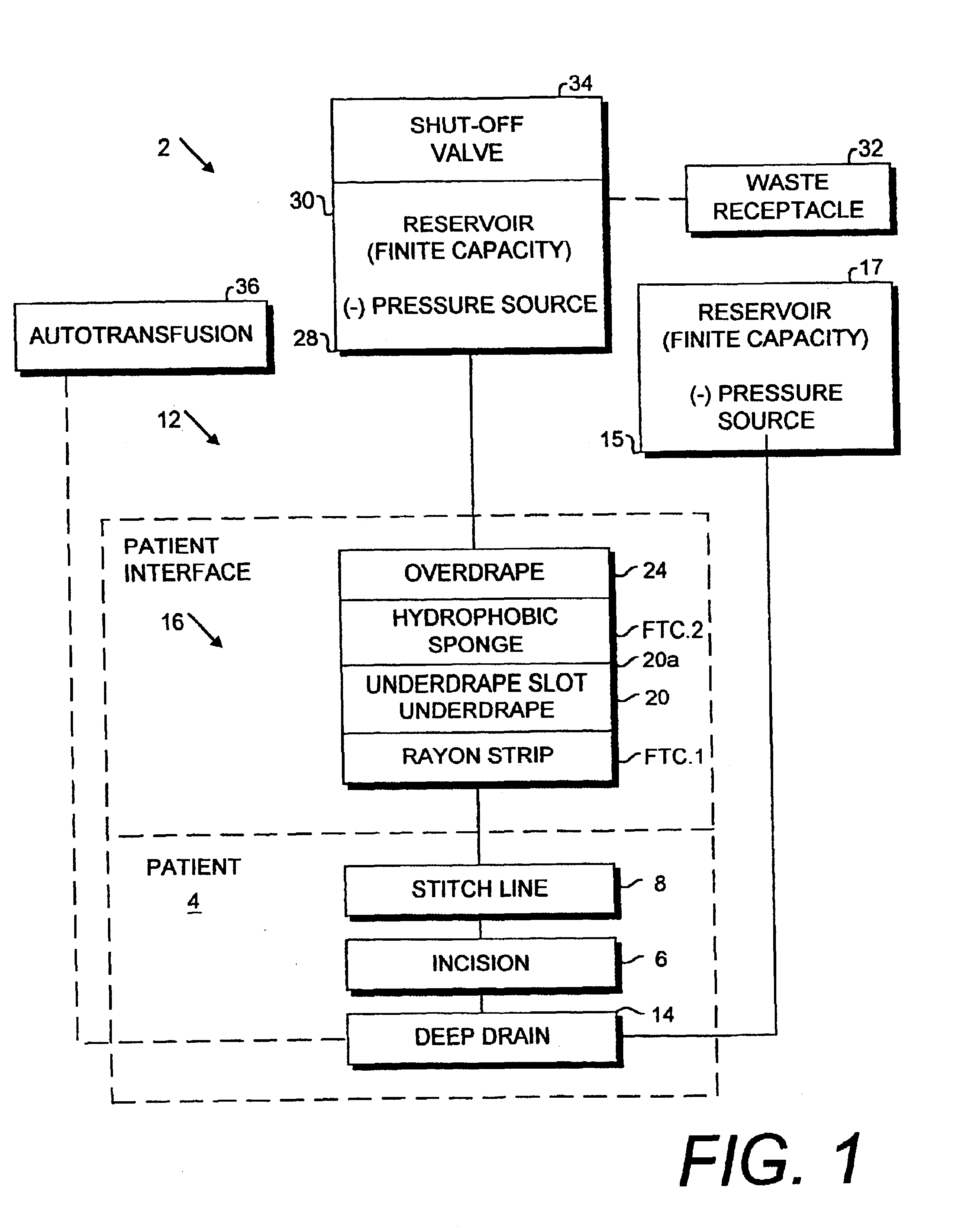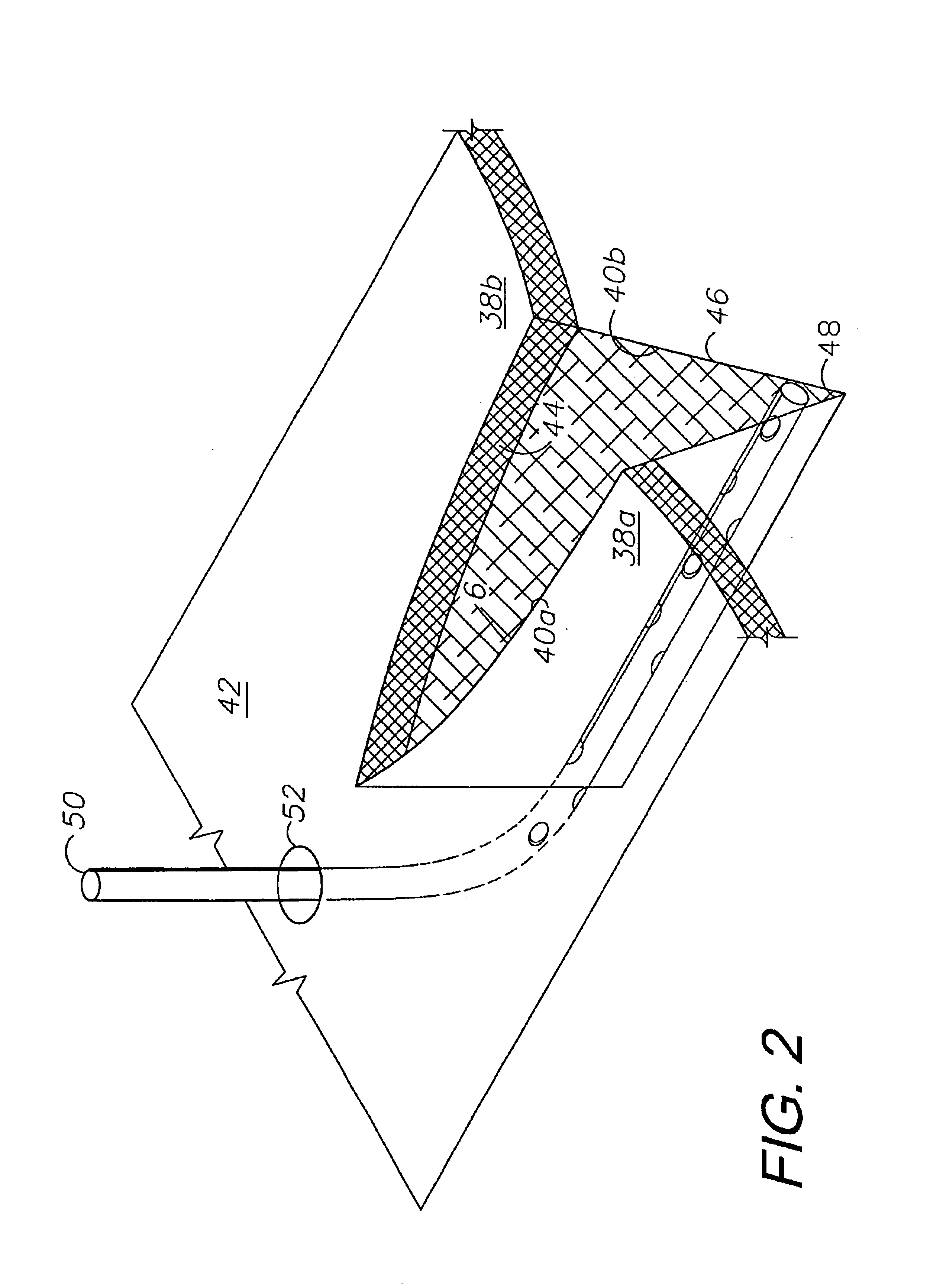Tissue closure treatment system and method with externally-applied patient interface
a technology of tissue closure and patient interface, applied in the field of tissue closure treatment system and patient interface with external application, can solve the problems of tissue separation, dead space problems that are more apt to occur, and incisions that require multiple layers of sutures, and achieve the effect of enhancing the closure of separated tissue portions
- Summary
- Abstract
- Description
- Claims
- Application Information
AI Technical Summary
Benefits of technology
Problems solved by technology
Method used
Image
Examples
Embodiment Construction
I. Introduction and Environment
[0037]As required, detailed embodiments of the present invention are disclosed herein; however, it is to be understood that the disclosed embodiments are merely exemplary of the invention, which may be embodied in various forms. Therefore, specific structural and functional details disclosed herein are not to be interpreted as limiting, but merely as a basis for the claims and as a representative basis for teaching one skilled in the art to variously employ the present invention in virtually any appropriately detailed structure.
II. Tissue Closure System 2
[0038]Referring to the drawings in more detail, the reference numeral 2 generally designates a tissue closure treatment system embodying the present invention. As shown in FIG. 1, the system 2 is adapted for use on a patient 4 with an incision or wound 6, which can be closed by a stitch line 8 consisting of sutures 10, staples or other suitable medical fasteners.
[0039]A patient interface 12 consists of...
PUM
 Login to View More
Login to View More Abstract
Description
Claims
Application Information
 Login to View More
Login to View More - R&D
- Intellectual Property
- Life Sciences
- Materials
- Tech Scout
- Unparalleled Data Quality
- Higher Quality Content
- 60% Fewer Hallucinations
Browse by: Latest US Patents, China's latest patents, Technical Efficacy Thesaurus, Application Domain, Technology Topic, Popular Technical Reports.
© 2025 PatSnap. All rights reserved.Legal|Privacy policy|Modern Slavery Act Transparency Statement|Sitemap|About US| Contact US: help@patsnap.com



